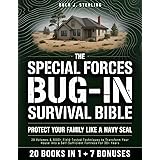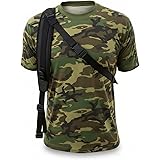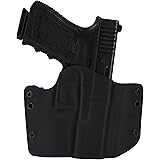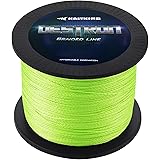Essential Preparedness: Simple Survival Hacks for Everyday Life and Emergencies
In an increasingly unpredictable world, the capacity to adapt and improvise often proves invaluable. While extensive emergency preparedness might seem daunting, it is understood that even the simplest of survival hacks can significantly enhance one’s readiness for unforeseen circumstances. The video above comprehensively discusses a range of practical skills and tips that are beneficial not only in critical emergency situations but also in navigating the minor inconveniences of daily life. This accompanying article expands upon these crucial insights, providing further context and detailed applications for becoming more self-reliant and prepared.
The essence of preparedness lies in foresight and resourcefulness. By integrating these basic yet potent strategies into one’s routine and emergency planning, individuals and families alike can foster a stronger sense of security. The following sections delve into various categories of these essential hacks, elaborating on their utility and offering additional considerations for their implementation.
Financial & Information Security: Preparing for the Unexpected
Maintaining immediate access to vital resources and information is paramount, especially when confronted with an emergency. Proactive measures in this area can alleviate significant stress during a crisis.
Secure Emergency Funds and Contact Information
A common oversight involves the potential loss or inaccessibility of one’s wallet or phone. Therefore, it is strongly advised that a contingency plan be established for immediate financial needs. Stashing a modest amount of cash, such as a $20 bill, within a phone case can serve as an invaluable backup. This ensures that essential purchases can be made, or emergency transportation can be secured, even if primary payment methods are unavailable. Furthermore, in the event of a cell phone malfunction or depleted battery, access to critical contacts becomes compromised. Consequently, a small, laminated card containing key phone numbers for family, friends, and emergency services should be stored alongside the cash. This simple act of foresight can be instrumental in re-establishing communication.
Digital Document Preservation and Accessibility
In an era where digital information is prevalent, securing vital personal and financial documents electronically is a critical aspect of modern emergency preparedness. Important documents such as birth certificates, marriage licenses, passports, insurance policies, and car titles should be scanned and saved. These files are ideally stored on a secure USB thumb drive, which is then password-protected. This portable repository allows for immediate access to necessary identification and records, which can be indispensable for applying for aid, proving identity, or initiating recovery efforts following a significant event. Moreover, it is prudent to download and store essential informational resources, such as first aid guides, medical textbooks, or survival manuals, onto the same drive. Such resources can prove life-saving when internet access is unavailable or when specialized knowledge is required for navigating diverse environments.
Improvised Lighting & Navigation: Illuminating Your Path
When primary power sources fail or unfamiliar terrain is encountered, the ability to generate light and orient oneself becomes fundamental for safety and successful navigation.
Crafting Simple Light Sources
Conventional lighting can become scarce during power outages or outdoor excursions. However, common household items can often be repurposed to provide illumination. A standard crayon, for instance, can function as an emergency candle; its wax-based composition allows for a burn time of approximately 20 to 30 minutes. This unexpected utility can provide a crucial light source for short durations. Furthermore, a rudimentary lantern can be fashioned from an empty metal can and a small candle. By cutting an opening in the can and placing the candle inside, the can not only amplifies the light but also shields the flame from wind, preventing it from being extinguished prematurely. This method creates a more stable and protected light source.
Transforming a Headlamp into Area Lighting
While headlamps are excellent for directional lighting, their focused beam is often inadequate for illuminating an entire area. A creative solution involves positioning the headlamp to shine inward towards a clear jug of water. The translucent plastic of the jug, combined with the refractive properties of the water, disperses the light in multiple directions. This diffusion transforms the concentrated beam into a soft, ambient glow that effectively lights a larger space, akin to a traditional lantern. This hack is particularly useful inside tents or small rooms, where broad illumination is preferred over a narrow spotlight.
Basic Navigation Tools from Everyday Objects
The ability to determine direction without a compass is a foundational survival skill. A simple compass can be constructed using a small piece of metal, such as a sewing needle, and a leaf in water. The needle is magnetized by rubbing it vigorously against fabric, such as clothing, several times in one direction. Subsequently, when the magnetized needle is carefully placed on a leaf floating in a small pool of water, it will align itself to point North. This elementary technique can offer crucial directional guidance when lost. Moreover, carrying a few pieces of chalk when venturing into unfamiliar wilderness areas is a simple yet effective strategy for maintaining awareness of one’s route. Marking trees, rocks, or other stable surfaces along the path serves two vital purposes: it prevents circular wandering and creates a traceable trail for potential search and rescue teams.
Resourceful Solutions for Sustenance and Shelter
Ingenuity with common materials can make a significant difference in securing basic needs like potable water, shelter, and fire.
Emergency Water Filtration
Access to clean drinking water is paramount for survival. While direct consumption of unfiltered water can lead to illness, a basic filtration method can remove larger particulate matter. Utilizing two jars and a bandana, a primitive filter can be constructed. The jar containing dirty water is elevated above an empty jar, with a piece of cloth acting as a wick between the two. The cloth slowly draws water from the higher jar to the lower one, leaving some sediment behind. It is imperative to understand that this method only removes physical impurities; all water filtered in this manner must still be boiled vigorously for at least one minute to neutralize harmful bacteria, viruses, and parasites before it is considered safe for consumption.
Multi-Purpose Aluminum Foil
Aluminum foil, often overlooked as a preparedness item, is remarkably versatile. Its lightweight and malleable properties allow it to serve numerous functions in a survival scenario. For instance, a sheet of heavy-duty foil can be fashioned into a makeshift container for boiling water over a fire. This is achieved by creating a pouch or bowl shape, which is then carefully placed over direct heat. Furthermore, when attempting to start a fire on damp ground, a piece of aluminum foil can be laid down as a reflective and dry base, isolating the tinder and kindling from moisture and reflecting heat upwards, thereby aiding in ignition. These are but two examples of the “many purposes” this common household item can fulfill, ranging from cooking surfaces to signaling. Its inclusion in a bug-out bag is highly recommended due to its expansive utility.
Improvised Fire Starters
Reliable fire starting is a cornerstone of survival, providing warmth, cooking capability, and water purification. Two commonly discarded household items can be combined to create effective fire starters: toilet paper rolls and dryer lint. By stuffing the highly flammable dryer lint into the cardboard core of a toilet paper roll, a potent and easily ignitable fire starter is created. This compact and readily available solution can significantly simplify the process of establishing a fire, particularly under challenging conditions.
Power & Self-Defense: Practical Adaptations
The ability to power essential devices and defend oneself can be crucial in a pinch, and simple modifications can often provide unexpected advantages.
Battery Exchange Solutions
A dead battery for a critical device can render it useless. However, in an emergency, creative solutions can extend functionality. If AA batteries are unavailable, but AAA batteries are on hand, they can often be substituted by filling the gap in the battery compartment with a small, balled-up piece of aluminum foil. Both AA and AAA batteries provide the same 1.5 volts; the primary difference lies in their amperage and capacity, with AA batteries having a higher capacity. For low-drain devices such as a small flashlight, this difference in amperage is usually negligible, allowing the device to function sufficiently until the correct battery size can be acquired.
Everyday Items for Personal Security
Personal safety is always a concern, and discrete self-defense options can provide an added layer of security. A fist full of keys, when properly gripped with the keys protruding between the fingers, can transform into a surprisingly effective, yet inconspicuous, defensive tool. This method amplifies the impact of a strike and is readily available in most situations without drawing undue attention or arousing suspicion, making it a highly practical option for personal protection.
Signaling & Utility Tools: Enhancing Your Capabilities
Beyond basic survival, the capacity to signal for help and improvise tools can dramatically improve outcomes.
Creating an Emergency Signaling Device
If one becomes lost or injured in a remote area, the ability to signal for help from a distance is paramount. A simple yet effective signaling device can be constructed using a glow stick and a piece of cord. By attaching the glow stick to the cord and twirling it rapidly in a circular motion, a bright, sweeping arc of light is created. This distinct visual pattern is highly visible from a considerable distance, particularly in low-light conditions, significantly increasing the chances of being spotted by search and rescue teams.
Improvised Fishing Hooks
For those in a wilderness survival situation, procuring food becomes essential. While specialized fishing gear might not be available, resourceful individuals can fashion basic fishing hooks from soda can tabs. By using a multi-tool, such as a Leatherman, small pieces of metal can be clipped from the tab and then filed to a sharp point. These simple, no-frills hooks, while not as efficient as commercial ones, can enable rudimentary fishing, potentially providing a crucial source of sustenance. This ingenuity underscores the importance of carrying a multi-tool for its diverse applications in preparedness.
The integration of these practical survival hacks into one’s knowledge base significantly bolsters overall resilience. From ensuring access to emergency funds and critical documents to improvising light and fire, these everyday solutions highlight how vigilance and resourcefulness can be cultivated with minimal effort. While the complexities of emergency situations are varied, a foundation built upon these adaptable skills can provide a critical advantage. Therefore, it is strongly encouraged that these techniques be practiced and incorporated into personal preparedness plans, ensuring a more secure and capable response to any challenge life may present.











